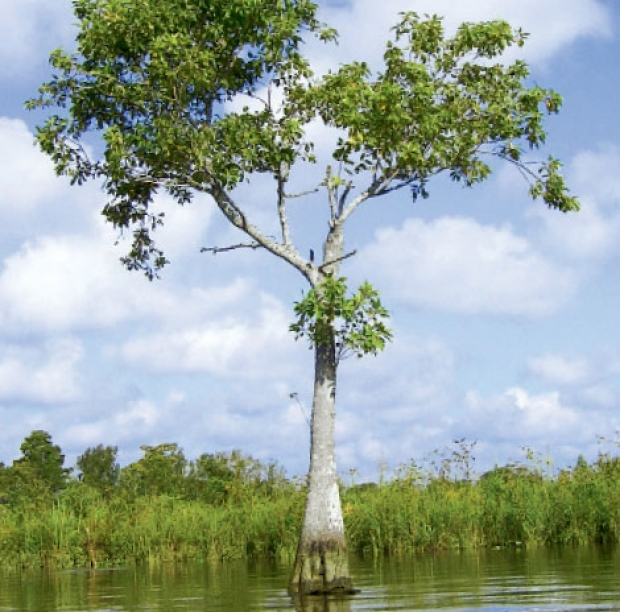Sure, there's miniature golf, water slides, Ripley’s—but there’s more to walking on the Grand Strand’s wild side, no tokens necessary

The Grand Strand’s crayon box of amusements—from the bric-a-brac of beach stores to the hot lights of Broadway at the Beach—is a playland come to life. It is easy to lose yourself among this dizzying circus.
But what’s also unintentionally lost is the fact that the Strand careens along one of the most biodiverse and ecologically spectacular areas of the country: the Waccamaw National Wildlife Refuge.
Theodore Roosevelt, among our country’s first champions of green living, had the foresight to designate Pelican Island in Florida as the nation’s first refuge—more than 100 years ago in 1903. Now, there are more than 540 wildlife refuges across the United States, part of the National Wildlife Refuge System, thousands of acres of preserved, public land for research, conservation, education, recreation, and respite.
Established in 1997 by the United States Department of the Interior, the Waccamaw refuge currently comprises more than 22,000 acres of Marion, Horry, and Georgetown counties around the confluence of the Waccamaw, Great Pee Dee, and Little Pee Dee rivers. The U.S. Fish and Wildlife Service, which manages the refuge, aims to obtain more than double that—land that is not only biologically rich, but also historically fertile, with ties to prehistoric time, and Native American and Colonial occupation. The Waccamaw River and Pee Dee rivers were named for Native American tribes that thrived on bountiful fish and bird species among the area’s tidal wetlands and woods.
Most of the refuge is made up of forested bottomlands, i.e., semi-wet areas with characteristics between dry, hardwood forests and swamplands.
Therefore, much of the refuge is not accessible by car. Boats, kayaks, and canoes are acceptable—and exciting—alternatives, and it costs nothing for a day at the education center, where you can watch videos, view exhibits, and talk to knowledgeable rangers. Additionally, bike trails and hiking areas flourish near the center.
It’s true that zoos and aquariums present animal worlds many of us can only conceive of, or experience virtually through television, film, and the Internet. But it is doubly exciting (and environmentally sound) to see nature in its chosen habitat, fence-free and beyond air-conditioned rooms. And it’s fitting that the Waccamaw refuge, like its Myrtle Beach neighbor, offers unparalleled attractions, such as the swallow-tailed kite bird, whose northernmost nesting post is within the refuge. There are also black-river swamps, rice fields, and teeming freshwater wetlands—among the most biodiverse in North America—with more than 400 species of birds, fish, and wildlife, including deer, turkeys, hogs, and squirrels.
If vacations are the pause buttons of our high-speed lives, then these reserves turn down the volume. Luckily, in the tranquil setting of the Waccamaw National Wildlife Refuge, it’s okay to get lost.
Waccamaw National
Wildlife Refuge Education Center
21424 North Fraser Street,
Georgetown
Free. (843) 527-8069